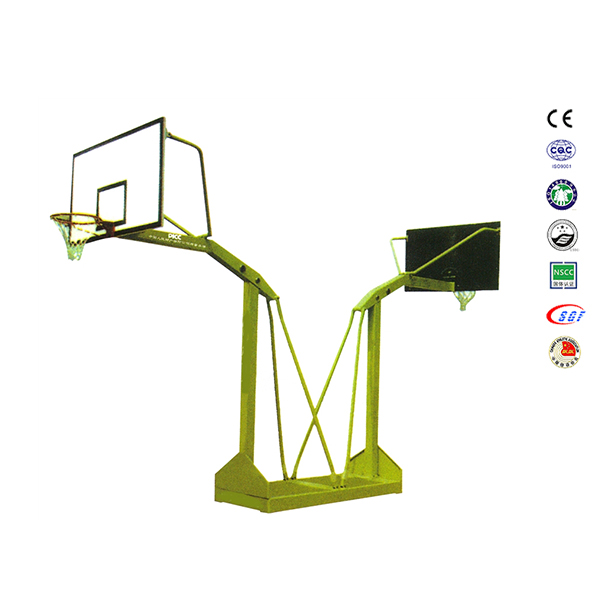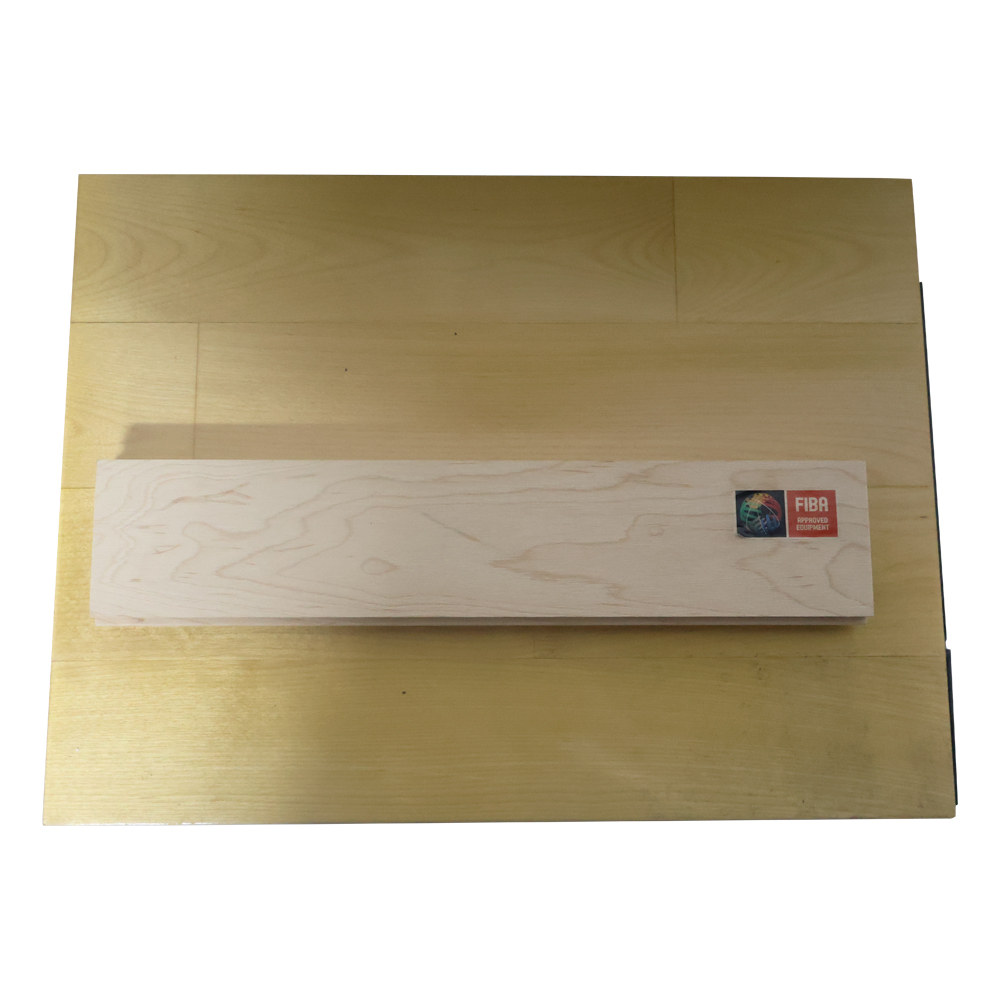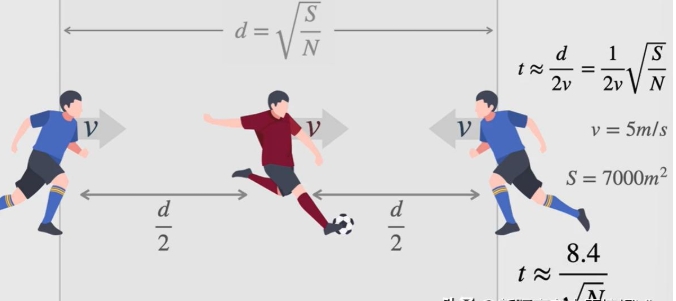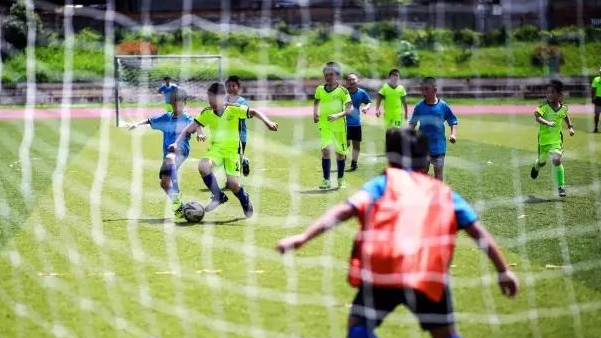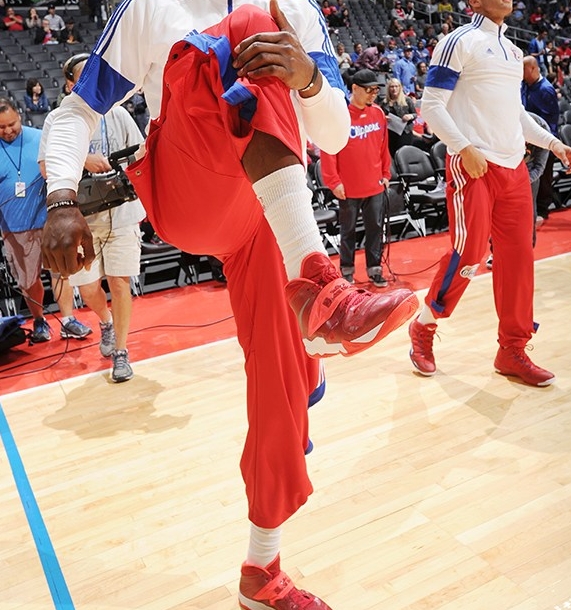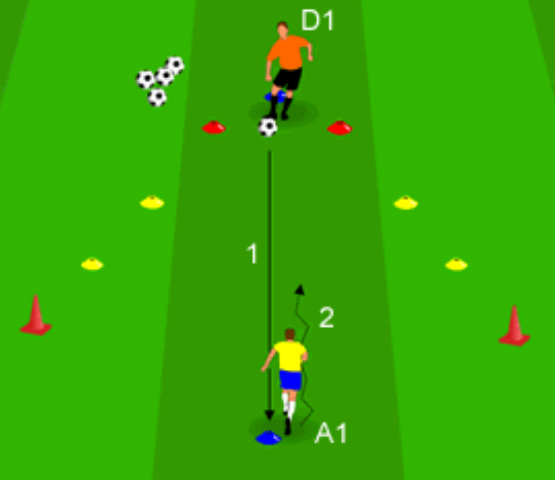Product
1 on 1 personal soccer training session
Basic Info
Training objectives
Train the ability to use feint moves to defeat defenders 1v1.essential information
Suitable age: 9-11 years oldRequired players: 2+
Difficulty level: Easy
Training time: 15-20 minutes
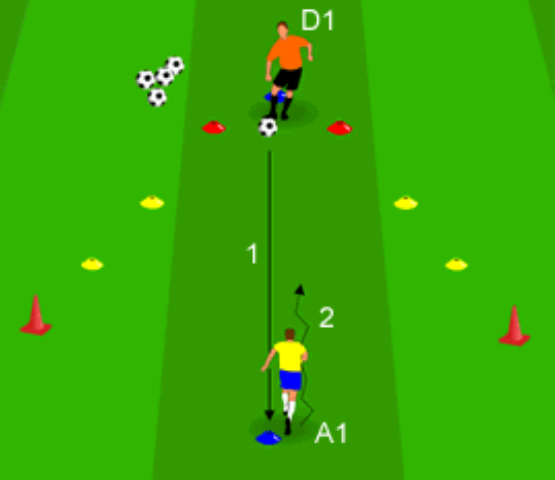
Site settings
Mark the triangular area as shown above.The blue cone represents the starting position.
The sides of a triangle are approximately 10x10x10 yards.
Defensive player (D1) has several Soccer balls.
Training rules
Two players alternate between scoring and turning while dribbling.D1 passes the ball to A1. Both players are located on the blue cone.
Once A1 touches the ball, D1 can enter and provide passive pressure (start).
A1 dribbles and feints to attack one of the seven goals. If the attacker manages to pass through it, each door has a different correlation point.
A1 dribbled alone at the door to score. D1 attempts to intercept and run on a sharp conical line.
After each attempt from the attacker to the defender, the player will rotate. Passive the first few and then have the defender give it their all.
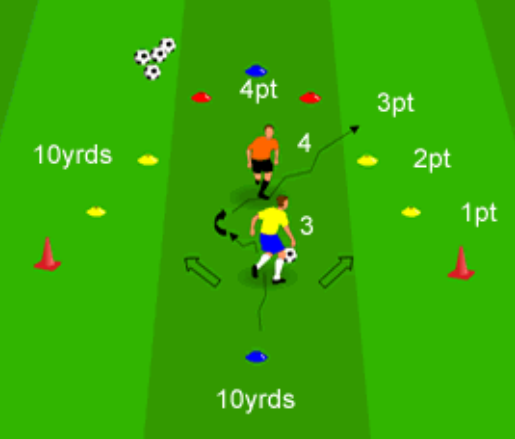
LDK Custom Caged Football Field
Scoring criteria
The attacker dribbles through any goal to score. As they approach the target (red cone-shaped door), the points increase.Between the pointed cone and the first yellow cone=1pt (either side).
Between 2 yellow cones=2 pts.
Between yellow and red cones=3pts.
Between 2 red cones=4pts.
The training time is 5 minutes.
The player (team) with the most points is the winner.
The defender scores by holding the ball and dribbling it through the cone line.
Change/Upgrade
Can be done within the team.If the feint performance is poor, the defender will become active and can solve the problem.
Key points of coach coaching
Change the pace to defeat the defensive team.Maintain a positive and positive attacking mentality.
Experiment with different combinations of fake actions.
Ensure that players do not always practice their favorite fake moves.
Encourage them to try new combinations and challenge themselves.

Why do coaches need to focus on explaining 1v1 exercises to children? Because 1vs1 practice is the foundation of football matches, improving children's one-on-one abilities during training can make it easier for them to defend and attack. Moreover, one-on-one practice can also enhance children's confidence and aggression when with or without the ball.
When will 1vs1 training start?
From the beginning of Football training, it is necessary to gradually introduce one-on-one practice. Children who have good one-on-one performance will become more creative in attacking and more solid in defense as training accumulates.Of course, some children are more accustomed to defensive roles or positions, while others are naturally suitable for playing in midfield. Coaches will place children with good scoring abilities closer to the goal, but regardless of the position, players should engage in effective one-on-one training (including one-on-one defense and one-on-one attack).

The basic 1-on-1 technology includes the following two aspects:
1.1 One on One Passing Technique2.1 Defensive techniques against 1
These two technologies are the foundation of a one-to-one approach. There is no doubt that successful teams have many players with good one-on-one abilities, such as Barcelona. Although their passing and cutting coordination is unbeatable, every player has the ability to defeat opponents in a one-on-one situation. Many times, players need to defeat their opponents one-on-one, and there are also many times when players need to face one-on-one defense. Therefore, the applicability of the above two techniques is quite strong. Let's take a look at the specific teaching points at the practical level.
1vs1 attack
Let's start with the more interesting part - Offensive 1VS1 Practice. How to cultivate children's one-on-one abilities? We tend to start with dribbling and dribbling, because if a player cannot dribble well into the gap, dribbling or dribbling, it will be difficult for them to develop their one-on-one attacking ability.What kind of dribbling can be more beneficial for players to learn and use, in order to defeat defenders? You can choose to teach children some basic dribbling skills and let them find a suitable type from these skills, continuously strengthen them, and evolve their own characteristics. For example, using Iniesta's fried balls, Zinedine Zidane's Marseille spin, and so on, these are very simple techniques, but they combine their own physical characteristics to unleash tremendous power.
Basic dribbling exercises can start from the four parts of the foot, including the dorsum of the foot, the outer dorsum of the foot, the inner side of the foot, and the inner side of the dorsum of the foot. When combined with one-on-one practice, simple spiking and dribbling are both very effective methods for passing, but of course, this requires the child's movements to have a high level of fluency.
In addition to these, there are countless excellent methods. Choose two or three simple ones to teach children, and then practice them with targeted methods until there are few mistakes. Once children become proficient, they can increase their shooting practice after passing the game.
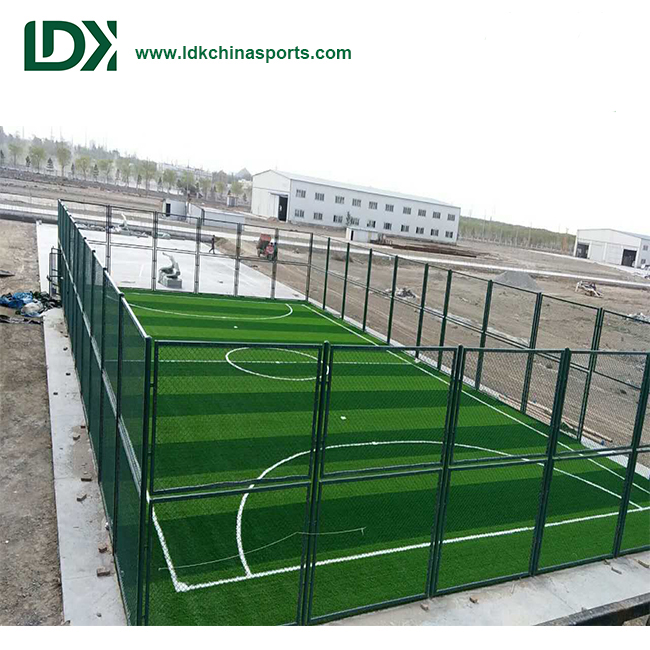
1vs1 Defense
One on one defensive practice is as important as one on one offensive practice, and they also have a certain connection.Because the intensity of defense often depends on the ability of the attacking player, the stronger the attacking player's ability, the corresponding defensive intensity will also increase. Therefore, if your team has some attacking players with good one-on-one abilities, they can help other players practice defense better.
If children learn basic one-on-one defense techniques, they can win more 5/5 goals and become tough defensive players. At the same time, the tension that arises from confrontation will also dissipate.
So what are the basic defensive techniques?
1. Stand sideways instead of facing the attacker head-on. Because if you defend head-on, you may get caught in the crotch. And standing sideways can effectively reduce the attacking area of the attacking player, because if it is face-to-face, the attacking player can either turn left or right, while if it is sideways, the attacking player can only choose one side.2. Players should maintain a fast, small, and mobile gait, as this allows the defensive team to catch up as soon as the attacker makes a disguised or fake move, without being easily eliminated.
3. Try to drive the attacking players towards the sidelines (away from the goal) or in areas with more defensive players (for easy grabbing).
Teaching younger children how to defend requires more time, as they not only need to master the rhythm of defense, but also need to learn how to seize the opportunity to intercept when facing attacking players.
Two basic 1VS1 exercises
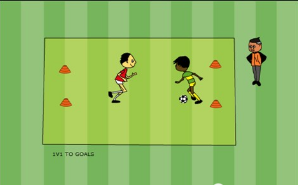
In the area shown in the figure, set up two goals placed by markers. The size of the area can be adjusted according to the strength of the player's abilities, with stronger ones being smaller and weaker ones being larger. The practice starts with the coach giving the ball, and the receiving team member breaks through or quickly dribbles the ball to the goal composed of markers to score (without shooting). The goal composed of the same markers can also be adjusted according to the player's ability, with stronger abilities being smaller and weaker abilities being larger.
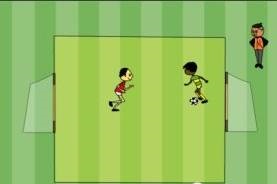
The above two are only basic 1VS training. I believe that coaches, combined with basic 1VS offensive and defensive principles, can definitely create more training methods.
More LDK football product recommendations:
Football Cage
Futsal Goals
Metal Football Goal
Aluminum Football Goal
Foldable Football Goal
Portable Football Goal
Mini Football Goal
LDK sports equipment manufacturer's promotion is in progress: Click to contact us now






